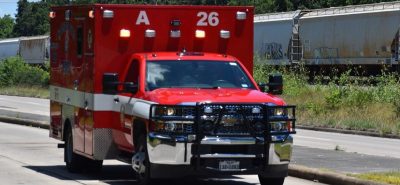Drivers in Illinois are legally mandated to move over or slow down for emergency responders along the road. Emergency responders are allowed to drive in excess of the posted limits, swerve through traffic, and run red lights or stop signs. The nature of their jobs puts them at risk of sustaining fatal or non-fatal injuries.
Emergency Responder Accidents a Pervasive Problem
Accidents involving emergency vehicles are a significant problem in the U.S. The estimated fatality rates for emergency responders are 4.8 times higher than the national average. The speed at which emergency vehicles travel to reach a crisis is the biggest contributor to severe injuries and death. Other emergency responders are struck by reckless, negligent, or distracted drivers while working at emergency scenes along the roadway. This can happen even when the emergency vehicle lights are on.
Statistics compiled over a 20-year period from 1992 to 2011 show that ambulances were involved in 6,500 accidents each year. Nearly 70% of fire truck accidents and 60% of ambulance accidents happen while responding to an emergency. Each year, there are approximately 300 fatalities from pursuit-related accidents. In 2018, more than 14,400 collisions were reported in the U.S. involving emergency vehicles responding to and returning from incidents. Out of those, 45 emergency responders were struck and killed while assisting others on the roadway.
Scott’s Law in Illinois
The legal privileges and protections given to emergency vehicles responding to or returning from incidents also extend to the roadway when the responders are handling an incident. Under Scott’s Law or the “Move Over Law,” Illinois drivers are legally mandated to move over or slow down when approaching an emergency vehicle using audible or visual signals. They must:
- Proceed with caution,
- Yield the right-of-way by changing into a lane not adjacent to the emergency vehicle, or
- If lane changing lane would be unsafe or impossible, the driver must slow down and proceed cautiously past the emergency vehicle.
Scotts’s Law was enacted by the Illinois legislature in 2002 following the death of Lieutenant Scott Gillen of the Chicago Fire Department. On December 23, 2000, Lt. Gillen was struck and killed while assisting at the scene of an accident on a Chicago expressway. A drunk driver drove past emergency road flares and lost control, and pinned Gillen against the truck, fatally injuring him. The law was enacted to help protect emergency responders from motorists at accident scenes.

